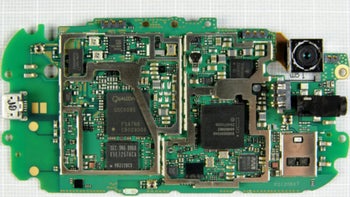Xiaomi and Oppo to take on Qualcomm and MediaTek with their own in-house 5G SoCs

With the chip shortage beginning to affect major phone and slate manufacturers like Apple, some Chinese firms like Oppo and Xiaomi are developing their own in-house 5G chips that will work with sub-6GHz 5G networks. These semiconductors will be released somewhere between late 2021 and early 2022 and will allow the manufacturers' phones to work with low and mid-band 5G spectrum. By designing their own chips, the two companies are competing against the most popular 5G SoC chip designers in Qualcomm and MediaTek.
According to industry sources in Taiwan cited by Digitimes, Xiaomi and Oppo will be joined by another Chinese outfit, Unisoc (formerly Spreadtrum). The latter is a "fabless semiconductor company" which means that it relies on third-party companies to actually manufacture chips based on its submitted designs. Last week, a report revealed that Google will use its own in-house SoC instead of one designed by Qualcomm for this fall's Pixel 6 and Pixel 6 XL.
While not an issue for Google, the Chinese firms are also concerned that the U.S. might ban them from receiving cutting-edge chips like the Trump administration did last year to Huawei. Last May, the U.S. Commerce Department revised an export rule so that a license is needed for a foundry that uses U.S. parts in the process of manufacturing chips, to ship such components to Huawei. That means that Huawei can't receive anymore 5nm Kirin 9000 chips even though it designed the chip itself.
Oppo, Xiaomi, Unisoc and any other Chinese consumer product company interested in building their own SoC will have to make sure that the foundry they choose won't have to follow U.S. export rules. The best way to make sure that this is the case is for tech firms headquartered in China to stay away from foundries that use American technology. And right now only TSMC and Samsung, both of which use U.S. technology, produce chips using the 5nm mode.
While the U.S. said at the time that the punishments it placed on Huawei over the previous two years were necessary for security reasons, both the U.S. and China remain locked in an ugly trade war that has taken a back seat to the pandemic. It doesn't seem at this point that the Biden team plans on reversing Huawei's placement on the Entity List and the revised export rules for chip shipments.
Fearing a repeat of U.S. actions against Huawei, Oppo and Xiaomi turn to in-house production of chipsets
Last year, Oppo hired some top executives from MediaTek, currently the world's largest chip designer for smartphones. Oppo reportedly also spoke with executives from Qualcomm and Huawei. In a competitive business like the smartphone industry, anything goes including poaching executives from rival companies.

Oppo is one of several Chinese companies looking to produce chips in-house
By using SoCs that they have designed themselves, phone manufactures gain greater control over the features of their phones and can improve the user experience and even optimize battery life. Apple is one of the smartphone manufacturers that designs its own chips and relies on a contract foundry to build the component. Apple uses TSMC for this task and it is now the latter's largest customer.
There are two main types of flash memory chips, NOR flash and NAND flash. Because of the tight supplies and heavy demand for chips, Digitime's report notes that customers belonging to Taiwan-based NOR flash chipmakers are more eager now to sign long-term supply contracts. The chip shortage has been created by the pandemic, which has led to stronger than expected demand for tablets, and there currently is a rebound in automobile production.
This year the two major global foundries, TSMC and Samsung, started shipping chips made using the 5nm process which allows more transistors to fit inside a square mm. Using Apple as an example, the A13 Bionic which powers the 2018 and 2019 iPhone lines, was made using the 7nm process. This process node fit nearly 90 million transistors inside a square mm and allowed the chip to contain 8.5 billion transistors.
The A14 Bionic, which runs last year's iPhone 12 series, was made with the 5nm process node that can fit 134 million transistors into a square mm and each chip carries 11.8 billion transistors. The more transistors inside a chip, the more powerful and energy efficient it is. Apple could be the first to offer a smartphone running a 3nm chip when the 2022 iPhone starts shipping presumably in September of that year.










Things that are NOT allowed: